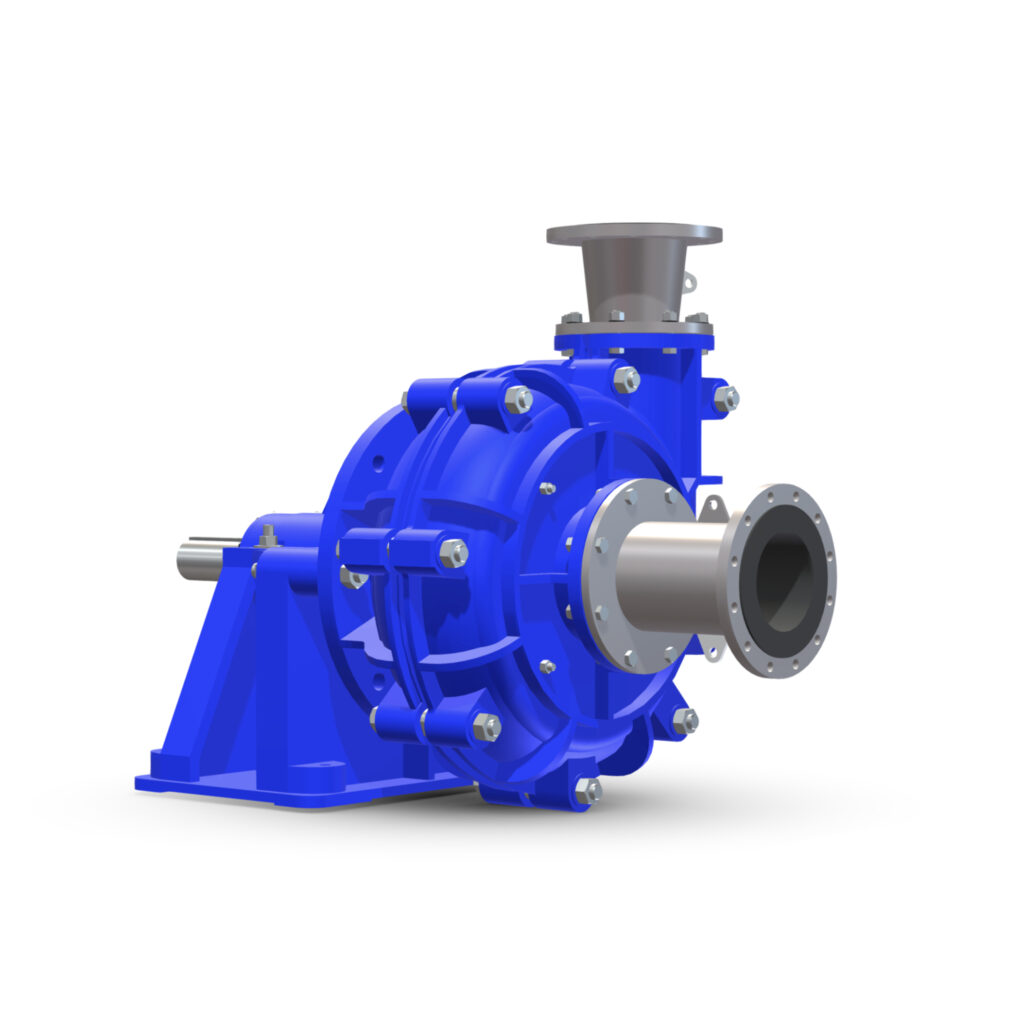
In this comprehensive overview, I delve into 15 different pump types and their diverse applications. From the precision of diaphragm pumps to the power of hydraulic pumps, I explore the mechanics, advantages, and real-world uses of these essential devices.
From ensuring a steady water supply to powering heavy machinery, pumps play an integral role in countless applications. However, not all pumps are created equal, and each type boasts unique features that make it ideal for specific tasks.
In this article:
- Overview table of different pump types
- 1. Centrifugal Pumps: Powering Fluid Transport
- 2. The Magic of Positive Displacement Pumps
- 3. Vane Pumps: Precision and Efficiency in Fluid Transfer
- 4. Vacuum Pumps: A World of Innovation
- 5. Gear Pumps: The Reliable Workhorses of Fluid Transfer
- 6. Screw Pumps: Precision and Efficiency in Fluid Transport
- 7. Jet Pumps: Harnessing Fluid Dynamics for Efficient Pumping
- 8. Submersible Pumps: Unseen Powerhouses Beneath the Surface
- 9. Peristaltic Pumps: Precision Flow with Minimal Contamination
- 10. Hydraulic Pumps: Powering a World of Motion
- 11. Piston Pumps: Precision and Power in Fluid Transfer
- 12. Diaphragm Pumps: Reliability and Versatility in Fluid Handling
- 13. Turbo Molecular Pumps: Powering the Vacuum Technology Revolution
- 14. Rotary Lobe Pumps: The Powerhouses of Gentle Fluid Transfer
- 15. Screw (Progressive Cavity) Pumps: Precision and Versatility in Fluid Handling
Overview table of the different pump types
| No. | Pump Type | Principle | Applications | Advantages | Disadvantages |
|---|---|---|---|---|---|
| 1. | Centrifugal Pumps | Rotating impeller | Water supply, cooling, wastewater | Efficient, simple design | Not suitable for viscous fluids |
| 2. | Positive Displacement Pump | Displace fluid using mechanisms | Chemical industry, oil, gas | Suitable for viscous fluids | Maintenance-intensive, pulsation |
| 3. | Vane Pump | Vanes move fluid | Food processing, wastewater | Self-priming, gentle on liquids | Susceptible to wear |
| 4. | Vacuum Pump | Creates a vacuum | Vacuum technology, aviation | Removes air/gases | Sensitive to contaminants |
| 5. | Gear Pump | Gears displace fluid | Hydraulic systems | Efficient at high pressures | Susceptible to wear |
| 6. | Screw Pump | Screw-like rotors | Food processing, chemicals, oil | Suitable for viscous fluids | Complex design, high cost |
| 7. | Jet Pump | Uses high-speed jet | Well pumps, water injection | Simple design, no moving parts | Low efficiency in deep wells |
| 8. | Submersible Pump | Submerged in fluid | Wastewater, well dewatering | Suitable for deep wells | Maintenance can be challenging |
| 9. | Peristaltic Pump | Compresses a tube | Laboratory, pharmaceutical | Contamination-free, dosing | Tubes require regular replacement |
| 10. | Hydraulic Pump | Driven by hydraulic power | Construction machinery, presses | High power density | Depends on hydraulic system |
| 11. | Piston Pump | Pistons displace fluid | Automotive, industrial applications | Precise dosing, low pulsation | Seal wear |
| 12. | Diaphragm Pump | Flexible diaphragm moves fluid | Chemical industry, dosing | Dosing, self-priming | Diaphragm maintenance required |
| 13. | Turbo Molecular Pump | Accelerates gas molecules | Vacuum technology, physics | Achieves very high vacuum | Expensive, complex maintenance |
| 14. | Lobed/Rotary Lobe Pump | Rotating lobes move fluid | Food, chemical industry | Suitable for fluids with particles | Susceptible to wear |
| 15. | Screw (Progressive Cavity) Pump | Screw displaces fluid | Food, oil, gas | Efficient, suitable for viscous fluids | Susceptible to wear, high cost |
1. Centrifugal Pumps: Powering Fluid Transport
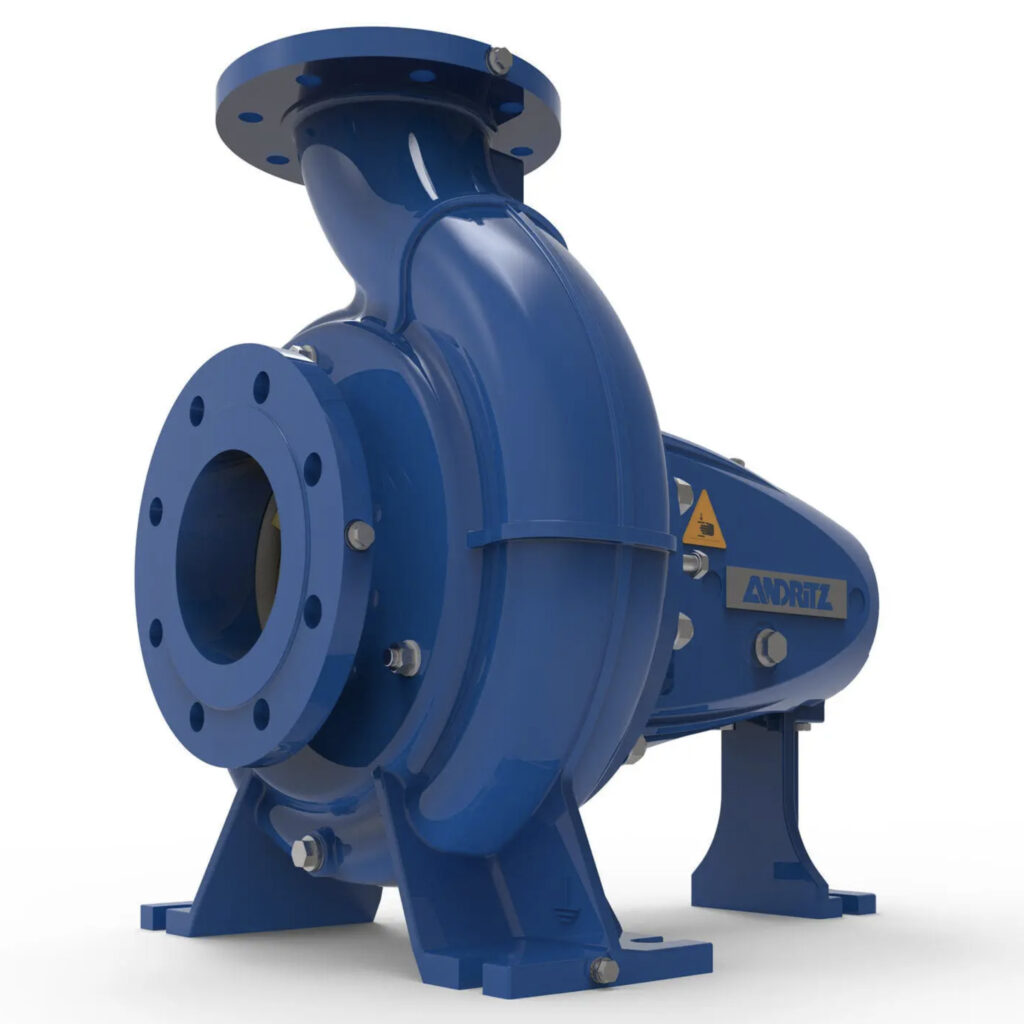
Centrifugal pumps are indispensable devices widely used in various industries to transfer fluids efficiently. Their ingenious design and functionality make them a cornerstone of fluid transportation systems. This article explores the key aspects of centrifugal pumps, shedding light on their operation, applications, and advantages.
How Centrifugal Pumps Work:
Centrifugal pumps operate on a straightforward principle: they convert mechanical energy into kinetic energy to move fluids. The pump consists of an impeller, which is a rotating component with vanes, enclosed within a casing. When the impeller spins, it generates a centrifugal force, pushing the fluid away from the center and into the casing. As a result, a low-pressure area is created at the impeller’s center, which allows more fluid to be drawn in from the inlet. This continuous flow of fluid creates pressure, propelling it through the outlet.
Versatile Applications:
Centrifugal pumps are found in diverse applications, including water supply and drainage, petrochemical processing, agriculture, and pharmaceutical production. They are also vital in heating and cooling systems, wastewater treatment plants, and oil refineries. The adaptability of centrifugal pumps to various fluid types, flow rates, and pressure requirements makes them a popular choice across industries.
View a Centrifugal Pump in 3D, Interactive(!)
Press the play button and you can view a centrifugal pump 3D CAD model interactively.
Advantages of Centrifugal Pumps:
- Simplicity: Centrifugal pumps have fewer moving parts, reducing maintenance requirements.
- High Efficiency: They offer efficient fluid transfer with minimal energy loss.
- Continuous Operation: Centrifugal pumps can run for extended periods, ensuring a consistent flow.
- Scalability: They can handle a wide range of flow rates and pressures, making them versatile.
Centrifugal pumps are engineering marvels that play a crucial role in countless applications. Their simplicity, efficiency, and adaptability make them a preferred choice for fluid transportation systems, contributing significantly to industrial processes and everyday life.
2. The Magic of Positive Displacement Pumps
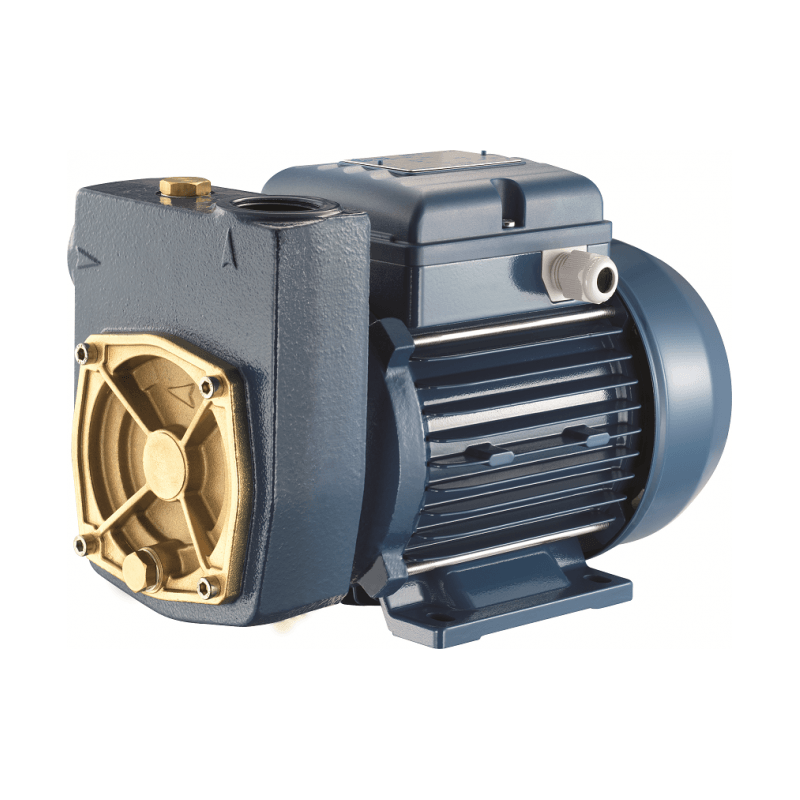
Positive Displacement (PD) pumps are the unsung heroes of fluid transfer, offering precise and reliable performance in a wide array of industries. This article delves into the workings, applications, and advantages of these remarkable pumps.
How Positive Displacement Pumps Operate:
At the heart of Positive Displacement pumps lies a simple yet ingenious principle. These pumps trap and displace a fixed amount of fluid with each cycle, ensuring accurate and consistent flow rates. They typically consist of a housing and a mechanism that creates chambers or cavities. As the mechanism moves, the chambers expand, drawing in fluid, and then contract, expelling it. This continuous action results in a uniform flow of fluid.
Diverse Applications:
Positive Displacement pumps find applications in numerous sectors, including pharmaceuticals, food and beverage, oil and gas, and wastewater treatment. They excel in situations where precise control of fluid delivery is crucial. PD pumps are commonly used for dosing chemicals, transferring viscous substances, and ensuring constant flow in hydraulic systems.
View a Positive Displacement Pump in 3D, Interactive(!)
Press the play button and you can view a positive displacement pump 3D CAD model interactively.
Advantages of Positive Displacement Pumps:
- Precision: PD pumps deliver a consistent flow, making them ideal for metering and dosing applications.
- Self-Priming: They can handle fluids with high viscosity or gases, often self-priming without needing external assistance.
- Pressure Stability: These pumps provide steady pressure output, vital in many industrial processes.
- Versatility: Positive Displacement pumps can accommodate a range of viscosities and handle shear-sensitive fluids.
Positive Displacement pumps are the go-to choice when precision, reliability, and versatility are paramount. Their ability to handle a broad spectrum of fluids and maintain accurate flow rates make them essential components in industries where fluid movement is a critical part of the process. Whether it’s delivering medication in healthcare or pumping oil in refineries, PD pumps quietly ensure the world keeps moving smoothly.
3. Vane Pumps: Precision and Efficiency in Fluid Transfer
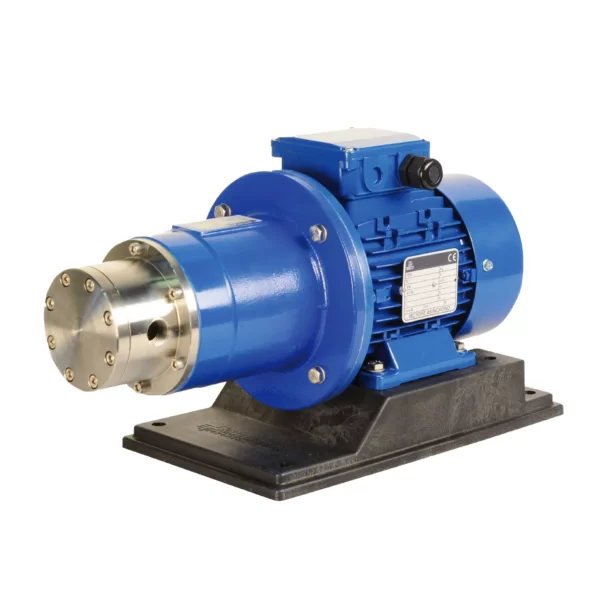
Vane pumps, a type of positive displacement pump, have earned their place in various industries for their exceptional efficiency, reliability, and versatility. This article explores the inner workings, applications, and benefits of vane pumps.
How Vane Pumps Operate:
Vane pumps operate on a simple yet ingenious principle. Within a circular casing, a rotor with vanes is eccentrically mounted. As the rotor turns, centrifugal force causes the vanes to extend and retract within their slots. This action creates expanding and contracting chambers, which draw in and expel fluid. Vane pumps are known for their consistent, pulsation-free flow, making them valuable in applications where precision matters.
Diverse Applications:
Vane pumps find their niche across various industries, including automotive, aerospace, hydraulic systems, and manufacturing. They excel in scenarios requiring steady and controlled fluid transfer. Vane pumps are frequently employed in power steering systems, hydraulic lifts, and industrial lubrication units.
View a Vane Pump in 3D, Interactive(!)
Press the play button and you can view a vane pump 3D CAD model interactively.
Advantages of Vane Pumps:
- Consistent Flow: Vane pumps provide a steady and pulsation-free flow, critical in precision applications.
- Efficiency: They offer high volumetric efficiency, ensuring minimal fluid wastage.
- Versatility: They can handle a wide range of viscosities and are often self-priming.
- Quiet Operation: Vane pumps are known for their quiet and smooth performance.
Vane pumps are unsung heroes of fluid transfer, combining precision and efficiency to ensure reliable performance in critical applications. Their ability to deliver consistent flow and handle diverse fluids makes them indispensable in industries where accuracy and dependability are paramount. Whether in a car’s power steering system or a complex hydraulic press, vane pumps quietly power the machinery that drives our modern world.
4. Vacuum Pumps: A World of Innovation
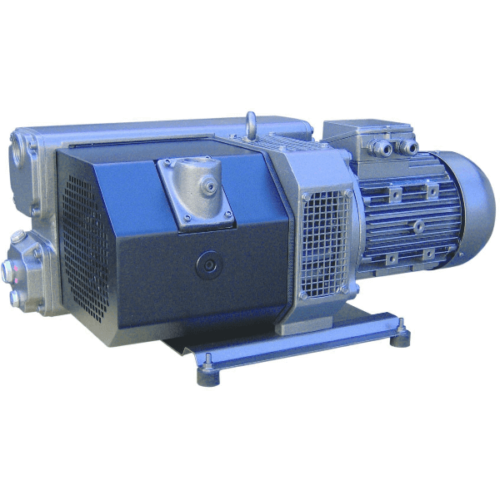
Vacuum pumps, although often overlooked, play a vital role in numerous industries and scientific applications. These devices are responsible for creating and maintaining vacuum conditions, enabling a wide range of processes and discoveries. In this article, we’ll explore the inner workings, diverse applications, and advantages of vacuum pumps.
How Vacuum Pumps Work:
At the heart of a vacuum pump is the ability to remove air and other gases from a sealed space, creating a vacuum. They operate using various mechanisms, including positive displacement, momentum transfer, and entrapment. One common type, the rotary vane pump, uses rotating vanes to create a partial vacuum by drawing in and expelling gas from a chamber. As the gas is removed, a low-pressure environment is created.
Diverse Applications:
Vacuum pumps find applications in industries ranging from manufacturing and research to healthcare and aerospace. They are crucial for processes like semiconductor manufacturing, chemical distillation, and medical equipment sterilization. In research, vacuum pumps enable experiments in materials science, chemistry, and physics, while in space exploration, they help simulate the conditions of outer space.
View a Vacuum Pump in 3D, Interactive(!)
Press the play button and you can view a vacuum pump 3D CAD model interactively.
Advantages of Vacuum Pumps:
- Precision: Vacuum pumps allow for precise control of pressure levels.
- Versatility: They can handle a wide range of gases and operate in extreme conditions.
- Efficiency: Vacuum pumps efficiently remove gases, allowing processes to occur at lower pressures.
- Clean and Safe: They facilitate contamination-free environments and reduce exposure to hazardous gases.
Vacuum pumps are unsung heroes, shaping countless industries and enabling groundbreaking discoveries. Their role in maintaining controlled environments and creating vacuum conditions is indispensable in modern science and technology. Whether in a laboratory, a manufacturing plant, or a spacecraft, vacuum pumps are the quiet powerhouses that make innovation possible.
5. Gear Pumps: The Reliable Workhorses of Fluid Transfer

Gear pumps are mechanical marvels that have quietly powered fluid transfer applications across various industries for decades. Their simple yet effective design, efficient operation, and versatility make them indispensable in a wide range of scenarios. This article delves into the inner workings, applications, and advantages of gear pumps.
How Gear Pumps Operate:
Gear pumps work on the principle of positive displacement, where fluid is drawn into the pump and then forced out as the gears mesh together. In a typical gear pump, two interlocking gears rotate within a housing. As they rotate, the fluid is trapped in the spaces between the gear teeth and is carried from the inlet to the outlet. This continuous cycle results in a consistent, pulsation-free flow of fluid.
Diverse Applications:
Gear pumps can be found in numerous industries, including automotive, chemical processing, oil and gas, and food production. They excel in situations requiring high-pressure and high-viscosity fluid transfer. Gear pumps are commonly used for lubrication, hydraulic systems, and as transfer pumps in manufacturing processes.
View a Gear Pump in 3D, Interactive(!)
Press the play button and you can view a gear pump 3D CAD model interactively.
Advantages of Gear Pumps:
- Reliability: Gear pumps have few moving parts, reducing the risk of mechanical failure and making them highly reliable.
- Efficiency: They offer excellent volumetric efficiency, ensuring minimal energy waste.
- Compact Design: Gear pumps are often more compact and lightweight than other pump types, making them suitable for tight spaces.
- Versatility: They can handle a wide range of viscosities and are self-priming in many applications.
Gear pumps are the unsung heroes of fluid transfer, providing reliable and efficient performance in diverse industries. Their ability to handle high-pressure and high-viscosity fluids, coupled with their straightforward design, makes them a preferred choice for critical applications where precision and dependability are essential. Whether quietly lubricating machinery or transferring vital fluids in industrial processes, gear pumps play a significant role in keeping the world in motion.
6. Screw Pumps: Precision and Efficiency in Fluid Transport
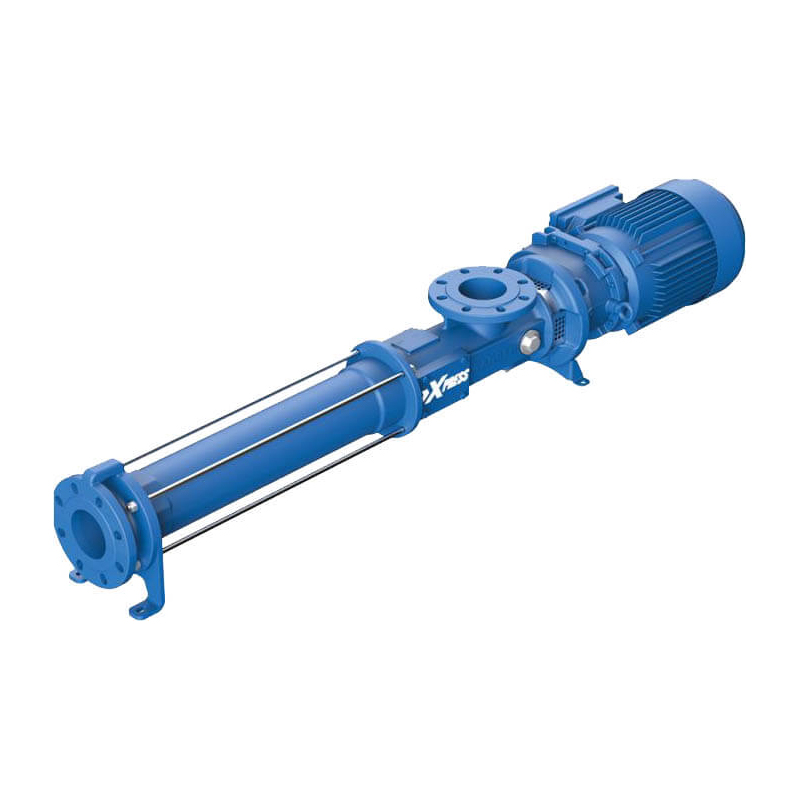
Screw pumps, often overshadowed by their centrifugal and gear counterparts, are an engineering marvel in fluid transportation. With their unique design and exceptional performance, these pumps are a staple in industries requiring precise and efficient fluid movement. This article explores the mechanics, applications, and advantages of screw pumps.
How Screw Pumps Operate:
Screw pumps function on a simple yet effective principle. They consist of one or more screw-like rotors, known as augers or screws, that rotate within a tightly fitting chamber. As the screws turn, they trap and push fluid along the screw’s threads from the inlet to the outlet. This continuous, non-pulsating flow of fluid makes screw pumps ideal for applications demanding steady and uniform fluid transfer.
Diverse Applications:
Screw pumps find applications in various industries, including oil and gas, marine, wastewater treatment, and food processing. They are well-suited for handling both low and high-viscosity fluids, making them indispensable in scenarios requiring precise control over flow rates and pressure.
View a Screw Pump in 3D, Interactive(!)
Press the play button and you can view a screw pump 3D CAD model interactively.
Advantages of Screw Pumps:
- Precise Flow Control: Screw pumps offer exceptional accuracy in fluid transfer, crucial in industries like chemicals and pharmaceuticals.
- High Efficiency: They are renowned for their high volumetric efficiency, minimizing energy wastage.
- Minimal Shear: Screw pumps gently move fluids, making them suitable for shear-sensitive substances.
- Low Noise and Pulsation: Screw pumps operate quietly and deliver a consistent, non-pulsating flow.
Screw pumps are unsung heroes in fluid transportation, combining precision and efficiency to ensure reliable performance in critical applications. Their ability to handle a broad spectrum of fluids while maintaining accurate flow rates and pressure makes them indispensable in industries where precision, reliability, and versatility are paramount. Whether it’s pumping crude oil in the oil and gas sector or conveying sensitive food products, screw pumps quietly power countless processes across the globe.
7. Jet Pumps: Harnessing Fluid Dynamics for Efficient Pumping
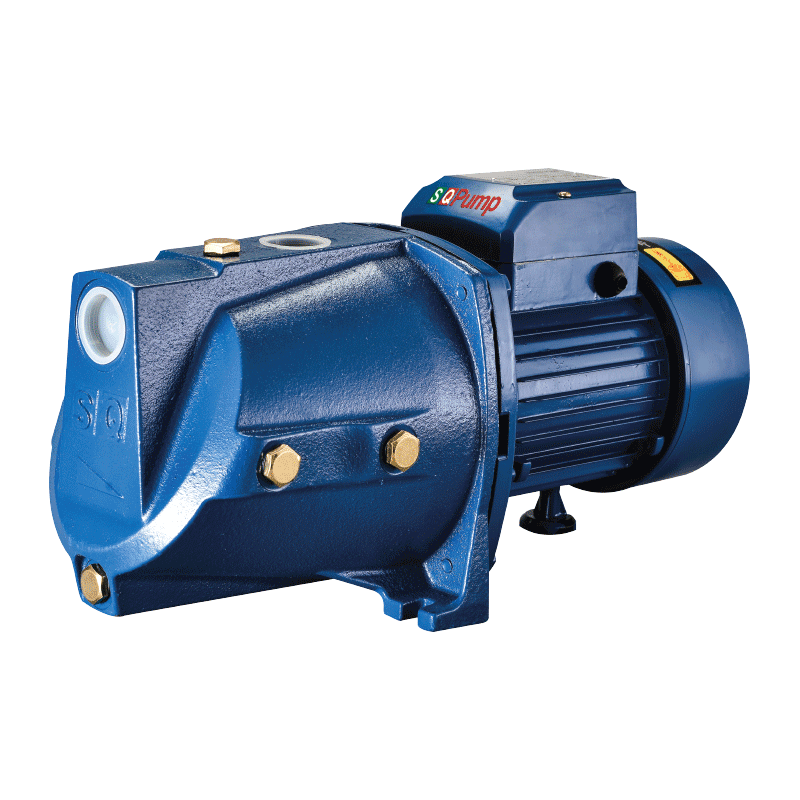
Jet pumps are ingenious devices that utilize fluid dynamics to move liquids efficiently. Although less well-known than some other pump types, they play a crucial role in a variety of applications. This article explores the operation, versatility, and advantages of jet pumps.
How Jet Pumps Work:
Jet pumps, also known as ejector pumps, work on a principle of fluid entrainment. They consist of a nozzle that forces a high-velocity jet of fluid, often referred to as the “motive” or “drive” fluid, into a venturi tube. This high-speed jet creates a low-pressure zone within the venturi, which in turn draws in a secondary fluid, typically the one to be pumped. The combined mixture of motive and secondary fluid is then discharged, transferring the secondary fluid to its destination.
Diverse Applications:
Jet pumps find applications in a wide range of industries, including agriculture, oil and gas, water supply, and wastewater treatment. They are particularly useful for lifting fluids from deep wells or moving liquids with solids or high viscosity. Jet pumps are also employed in steam ejectors and aircraft fuel systems.
Advantages of Jet Pumps:
- Simplicity: Jet pumps have few moving parts, reducing the need for maintenance.
- Versatility: They can handle various types of fluids, including corrosive and abrasive materials.
- Self-Priming: Jet pumps are often self-priming, which means they can start pumping without the need for additional priming.
- Energy Efficiency: They can operate without the use of electricity or mechanical power, making them energy-efficient.
Jet pumps are the unsung heroes of fluid transportation, offering a reliable and versatile solution for various industries. Their ability to move fluids efficiently and effectively, even in challenging conditions, makes them a valuable asset in the world of pumping technology. Whether drawing water from a well, mixing chemicals in industrial processes, or maintaining aircraft systems, jet pumps quietly excel in ensuring fluid dynamics work to our advantage.
8. Submersible Pumps: Unseen Powerhouses Beneath the Surface
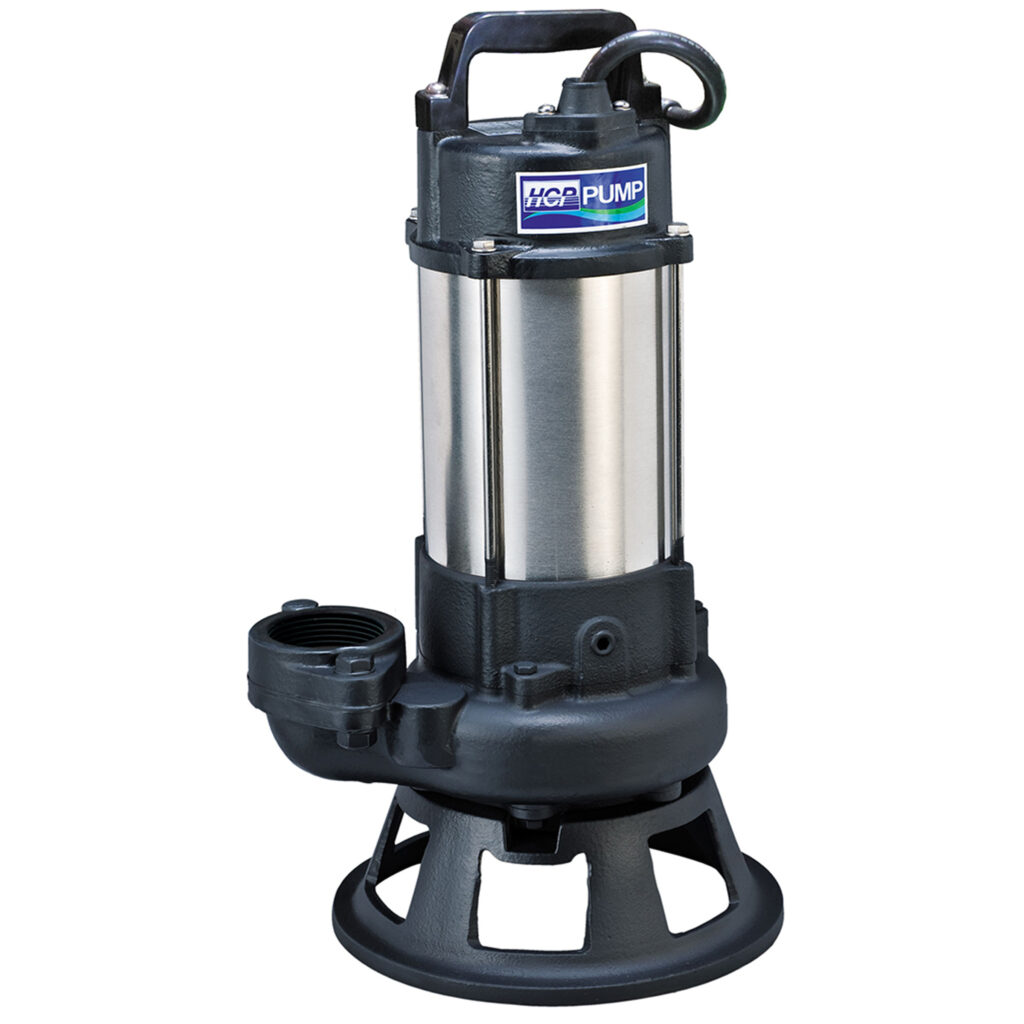
Submersible pumps are engineering marvels that bring efficiency and convenience to various industries by taking fluid transfer to new depths. These submerged workhorses provide a seamless solution for applications requiring the movement of liquids from below the water’s surface. In this article, we’ll explore the workings, applications, and advantages of submersible pumps.
How Submersible Pumps Operate:
Submersible pumps are designed to be fully immersed in the fluid they are pumping, typically water or wastewater. Their hermetically sealed motor is placed within a waterproof casing. The pump’s impeller, driven by the motor, draws fluid in through the inlet and expels it through the outlet. This unique design eliminates the need for priming and allows the pump to efficiently move fluids from submerged depths to the surface.
Diverse Applications:
Submersible pumps are a cornerstone in several industries, including agriculture, municipal water supply, mining, and wastewater treatment. They are instrumental in tasks such as drainage, sewage handling, well water extraction, and even maintaining aquariums. Their submersion capability makes them ideal for applications where traditional pumps would fail.
Advantages of Submersible Pumps:
- Efficiency: Submersible pumps are highly efficient due to their direct immersion in the fluid, reducing energy loss.
- Reliability: They are less prone to cavitation and can handle abrasive or corrosive materials.
- Space-Saving: Submersible pumps save valuable surface space as they are installed directly in the fluid source.
- Low Maintenance: With fewer exposed components, these pumps require minimal upkeep.
Submersible pumps are the unseen powerhouses beneath the water’s surface, providing a reliable and efficient solution for fluid transfer in various applications. Their ability to operate submerged, coupled with their durability and low maintenance requirements, makes them indispensable in industries where fluids need to be moved from below. Whether it’s ensuring a steady water supply to a city or keeping a basement dry, submersible pumps silently serve as a cornerstone of modern infrastructure.
9. Peristaltic Pumps: Precision Flow with Minimal Contamination
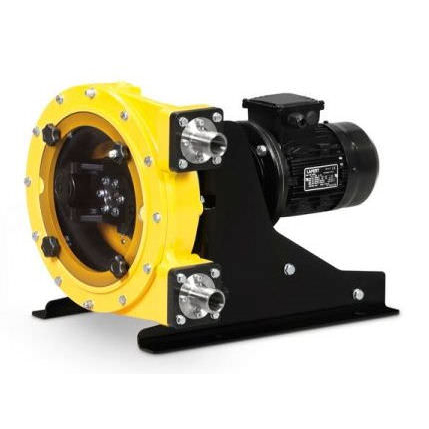
Peristaltic pumps, also known as hose pumps, offer a unique and versatile solution for fluid transfer and metering applications. Their innovative design and precision make them an indispensable tool across a range of industries. This article delves into the mechanics, diverse applications, and advantages of peristaltic pumps.
How Peristaltic Pumps Work:
Peristaltic pumps operate on a remarkably simple principle. A flexible tube, often made of rubber or silicone, is positioned within the pump housing. As rollers or shoes repeatedly compress and relax the tube, a series of “peristaltic” waves is created, squeezing the fluid within the tube forward. This action effectively “milks” the fluid through the tube, providing a pulsation-free and highly precise flow.
Diverse Applications:
Peristaltic pumps find applications across a wide range of industries, including pharmaceuticals, food and beverage, wastewater treatment, and laboratory settings. They are particularly valuable in situations where contamination is a concern, as the fluid remains completely enclosed within the tube, eliminating the risk of contact with pump components.
View a Peristaltic Pump in 3D, Interactive(!)
Press the play button and you can view a peristaltic (hose) pump 3D CAD model interactively.
Advantages of Peristaltic Pumps:
- Precision and Accuracy: Peristaltic pumps offer exceptional flow control, making them ideal for metering and dosing applications.
- Contamination-Free: The fluid only contacts the tube, reducing the risk of contamination or cross-contamination.
- Low Maintenance: With no internal valves or seals, these pumps require minimal maintenance.
- Versatility: They can handle a wide range of viscosities and abrasive or corrosive fluids.
Peristaltic pumps are the champions of precision and hygiene in fluid transfer. Their ability to provide contamination-free, pulsation-free, and highly accurate flow makes them indispensable in industries where precision and cleanliness are paramount. Whether it’s delivering medication in healthcare, transferring sensitive fluids in research, or ensuring the quality of beverages in the food industry, peristaltic pumps quietly and reliably meet the stringent demands of modern applications.
10. Hydraulic Pumps: Powering a World of Motion

Hydraulic pumps are the unsung heroes behind countless machines and systems that move, lift, and operate with precision. These mechanical marvels convert mechanical energy into hydraulic energy, driving a wide range of applications across industries. In this article, we’ll delve into the mechanisms, diverse applications, and advantages of hydraulic pumps.
How Hydraulic Pumps Operate:
Hydraulic pumps are at the core of hydraulic systems, which use pressurized fluids to perform mechanical work. These pumps generate hydraulic energy by drawing in fluid from a reservoir and forcing it into a high-pressure system. There are various types of hydraulic pumps, including gear pumps, vane pumps, and piston pumps, each with unique mechanisms for fluid displacement.
Diverse Applications:
Hydraulic pumps find applications in industries as diverse as construction, manufacturing, aerospace, and automotive. They are responsible for powering heavy machinery like excavators, cranes, and bulldozers, as well as precision tools such as hydraulic presses and braking systems in vehicles. Hydraulic systems are also integral to flight control in aircraft.
View a Hydraulic Pump in 3D, Interactive(!)
Press the play button and you can view a hydraulic pump 3D CAD model interactively.
Advantages of Hydraulic Pumps:
- Efficiency: Hydraulic systems are known for their high power-to-weight ratios and efficiency in transmitting force.
- Precision: Hydraulic pumps offer precise control over force and speed, crucial in applications requiring fine-tuned movements.
- Reliability: They are robust and durable, capable of withstanding harsh operating conditions.
- Versatility: Hydraulic pumps can handle a wide range of fluid viscosities and are suitable for both high and low-pressure applications.
Hydraulic pumps are the workhorses of industries worldwide, providing the power and precision needed to operate a vast array of machinery and systems. Their ability to convert mechanical energy into hydraulic force ensures that everything from towering construction cranes to delicate manufacturing processes can function with efficiency and accuracy, making them a cornerstone of modern engineering and technology.
11. Piston Pumps: Precision and Power in Fluid Transfer
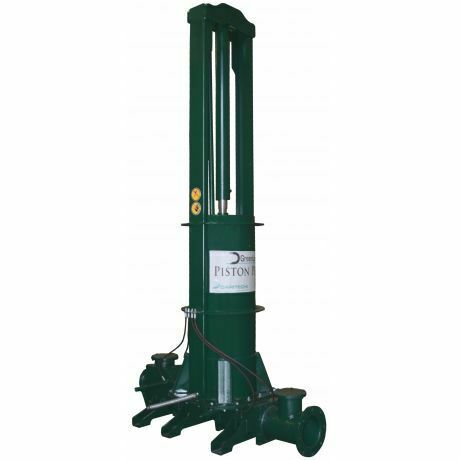
Piston pumps are engineering marvels known for their precision, power, and versatility in fluid transfer applications. These devices, characterized by their piston-cylinder arrangement, quietly drive various industries by efficiently moving liquids and generating hydraulic force. In this article, we explore the inner workings, wide-ranging applications, and advantages of piston pumps.
How Piston Pumps Operate:
Piston pumps operate on the principle of positive displacement. They consist of a piston, housed within a cylinder, and valves that control the flow of fluid. As the piston reciprocates within the cylinder, it alternately creates suction and discharge strokes. During the suction stroke, fluid is drawn into the cylinder through an inlet valve, and during the discharge stroke, it is expelled through an outlet valve. This mechanism ensures precise and consistent fluid transfer.
Diverse Applications:
Piston pumps find applications across numerous industries, including manufacturing, agriculture, automotive, and oil and gas. They excel in tasks that require high-pressure and high-flow rates, such as hydraulic systems, pressure washing, and metering applications. Piston pumps are also used in laboratories, where precise fluid control is essential.
View a Piston Pump in 3D, Interactive(!)
Press the play button and you can view a piston pump 3D CAD model interactively.
Advantages of Piston Pumps:
- Accuracy: Piston pumps offer exceptional flow control and accuracy, making them suitable for dosing and metering applications.
- High Pressure: They can handle extremely high-pressure requirements, making them indispensable in heavy-duty applications.
- Durability: Piston pumps are built to withstand demanding conditions, ensuring longevity and reliability.
- Versatility: They can handle a wide range of viscosities and fluids, including corrosive and abrasive materials.
Piston pumps are the epitome of precision and power in fluid transfer technology. Their ability to provide accurate and reliable performance in high-pressure applications makes them a cornerstone of modern industry. Whether it’s powering hydraulic systems, precisely metering chemicals, or performing heavy-duty tasks, piston pumps play a vital role in shaping the world around us.
12. Diaphragm Pumps: Reliability and Versatility in Fluid Handling
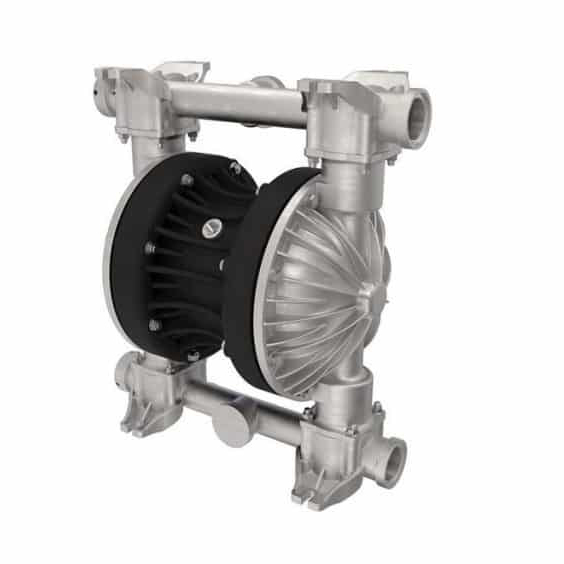
Diaphragm pumps, often unsung heroes in the world of fluid handling, are revered for their reliability, precision, and versatility. These pumps quietly power an array of industries by efficiently moving liquids and gases while ensuring containment and safety. In this article, we’ll explore the mechanics, diverse applications, and advantages of diaphragm pumps.
How Diaphragm Pumps Operate:
Diaphragm pumps operate on a straightforward yet effective principle. They consist of a flexible diaphragm, typically made of rubber or elastomeric material, that flexes back and forth within a chamber. As the diaphragm flexes, it creates a vacuum on one side, drawing in fluid, and then applies pressure on the other side, expelling the fluid. This alternating motion results in a consistent, pulse-free flow.
Diverse Applications:
Diaphragm pumps find applications in industries spanning pharmaceuticals, food and beverage, chemical processing, and wastewater treatment. They are particularly suited for applications requiring precise control over fluid transfer, such as metering and dosing. Diaphragm pumps are also employed in medical devices, laboratory equipment, and inkjet printing.
View a Diaphragm Pump in 3D, Interactive(!)
Press the play button and you can view a diaphragm pump 3D CAD model interactively.
Advantages of Diaphragm Pumps:
- Precise Control: Diaphragm pumps offer exceptional flow control, making them ideal for applications requiring accurate dosing.
- Containment: Their hermetic design ensures the separation of the fluid from the pump’s moving parts, preventing contamination and leakage.
- Durability: Diaphragm pumps are robust and can handle abrasive, corrosive, and viscous fluids.
- Versatility: They can handle a wide range of fluids and are suitable for both low and high-pressure applications.
Diaphragm pumps are the reliable workhorses of fluid handling, offering precision and containment in diverse applications. Their ability to provide pulse-free and contamination-free flow, combined with their durability and versatility, makes them indispensable in industries where safety, precision, and efficiency are paramount. Whether it’s accurately dispensing pharmaceuticals or transferring chemicals in manufacturing, diaphragm pumps quietly and effectively meet the stringent demands of modern fluid handling.
13. Turbo Molecular Pumps: Powering the Vacuum Technology Revolution
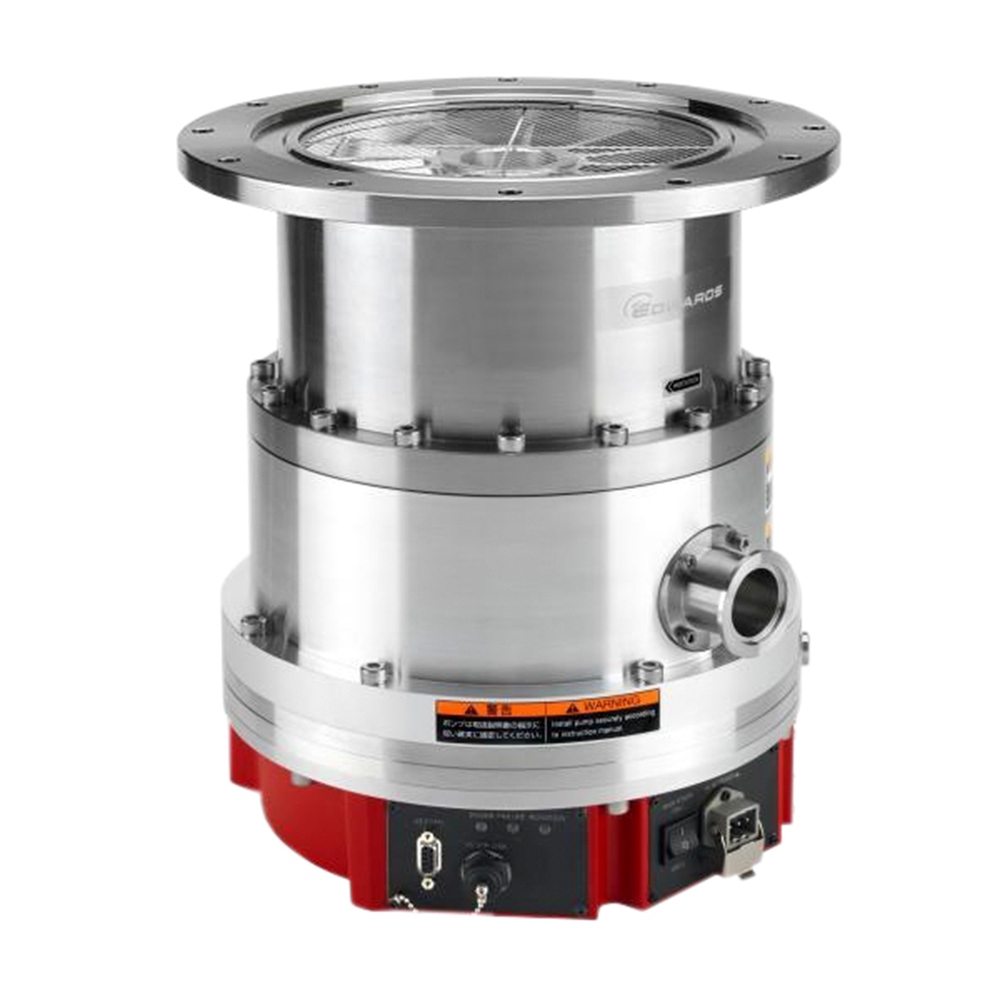
Turbo molecular pumps are at the forefront of vacuum technology, enabling a new era of scientific discovery and industrial advancement. These high-performance pumps have revolutionized the way we create and maintain ultra-high vacuum environments, driving innovation in numerous fields. In this article, we delve into the intricacies, diverse applications, and advantages of turbo molecular pumps.
How Turbo Molecular Pumps Operate:
Turbo molecular pumps, often referred to as turbopumps, operate on a principle of high-speed rotation and molecular drag. They consist of a series of precisely engineered rotor blades that rotate at extremely high speeds. As gas molecules enter the pump, they collide with the rapidly spinning rotor blades, gaining energy and momentum. This continuous interaction propels the gas molecules toward the exhaust, creating a highly efficient means of evacuating air and achieving ultra-high vacuum levels.
Diverse Applications:
Turbo molecular pumps are indispensable in various scientific and industrial applications. They are commonly used in semiconductor manufacturing, surface analysis, mass spectrometry, and research laboratories. These pumps are essential in creating vacuum environments for processes like thin-film deposition, particle accelerators, and space simulation chambers.
Advantages of Turbo Molecular Pumps:
- Ultra-High Vacuum: Turbo molecular pumps can achieve and maintain vacuum levels in the range of 10^-9 to 10^-10 mbar, crucial for sensitive applications.
- Clean and Oil-Free: They are oil-free, minimizing contamination risks in vacuum chambers.
- Compact Design: Turbo molecular pumps are compact and lightweight, ideal for integration into complex systems.
- High Pumping Speed: They offer high pumping speeds for efficient gas evacuation.
Turbo molecular pumps represent the pinnacle of vacuum technology, enabling breakthroughs in science and industry. Their ability to create ultra-high vacuum environments with precision, cleanliness, and efficiency makes them indispensable in applications where the smallest traces of gas can interfere with experiments or processes. Turbo molecular pumps are the silent champions driving progress in research, technology, and innovation.
14. Rotary Lobe Pumps: The Powerhouses of Gentle Fluid Transfer
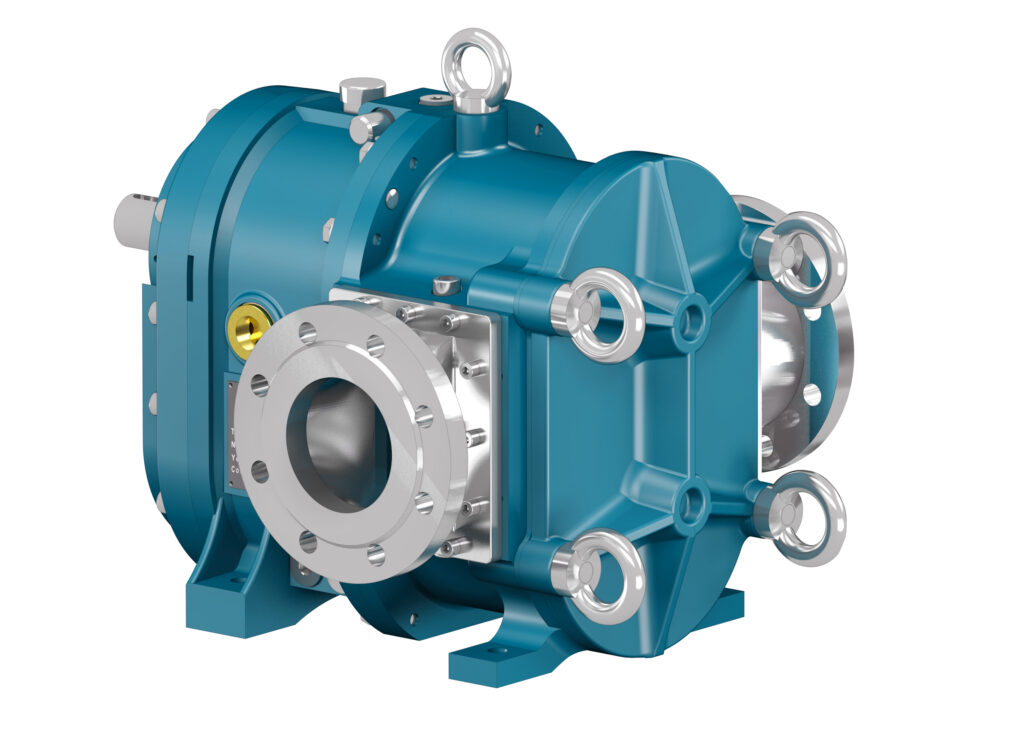
Rotary lobe pumps are the unsung heroes of the fluid handling world, revered for their ability to delicately and efficiently transfer a wide range of fluids without compromising their integrity. These robust pumps play a crucial role in industries requiring gentle fluid movement and precise metering. In this article, we explore the mechanics, diverse applications, and advantages of rotary lobe pumps.
How Rotary Lobe Pumps Operate:
Rotary lobe pumps operate on a positive displacement principle. They consist of two synchronized lobed rotors within a casing. As the rotors rotate, they create chambers that draw in and expel fluid without contact between the lobes. This gentle, non-shearing action makes rotary lobe pumps particularly well-suited for transferring shear-sensitive, viscous, and abrasive fluids.
Diverse Applications:
Rotary lobe pumps find applications in industries spanning food and beverage, pharmaceuticals, chemicals, and wastewater treatment. They are instrumental in handling products like dairy, chocolate, cosmetics, and sludge. In the pharmaceutical sector, they ensure precise dosing of sensitive medications, while in wastewater treatment plants, they efficiently move slurry and solids-laden liquids.
Advantages of Rotary Lobe Pumps:
- Gentle Fluid Handling: Rotary lobe pumps are renowned for their non-shearing and low-pulsation operation, preserving the integrity of delicate fluids.
- Versatility: They can handle a wide range of viscosities, temperatures, and flow rates, offering flexibility in various applications.
- Hygienic Design: Rotary lobe pumps are easy to clean and sanitize, making them ideal for food and pharmaceutical industries.
- Durability: They are built to withstand abrasive and corrosive materials, ensuring long service life.
Rotary lobe pumps are the dependable workhorses of fluid transfer, offering precision, efficiency, and gentleness in diverse applications. Their ability to move fluids without compromise, whether in the food on your plate, the medications in your cabinet, or the treatment of wastewater, makes them indispensable in industries where quality and reliability are paramount. Rotary lobe pumps are the silent champions ensuring the smooth flow of our daily lives.
15. Screw (Progressive Cavity) Pumps: Precision and Versatility in Fluid Handling
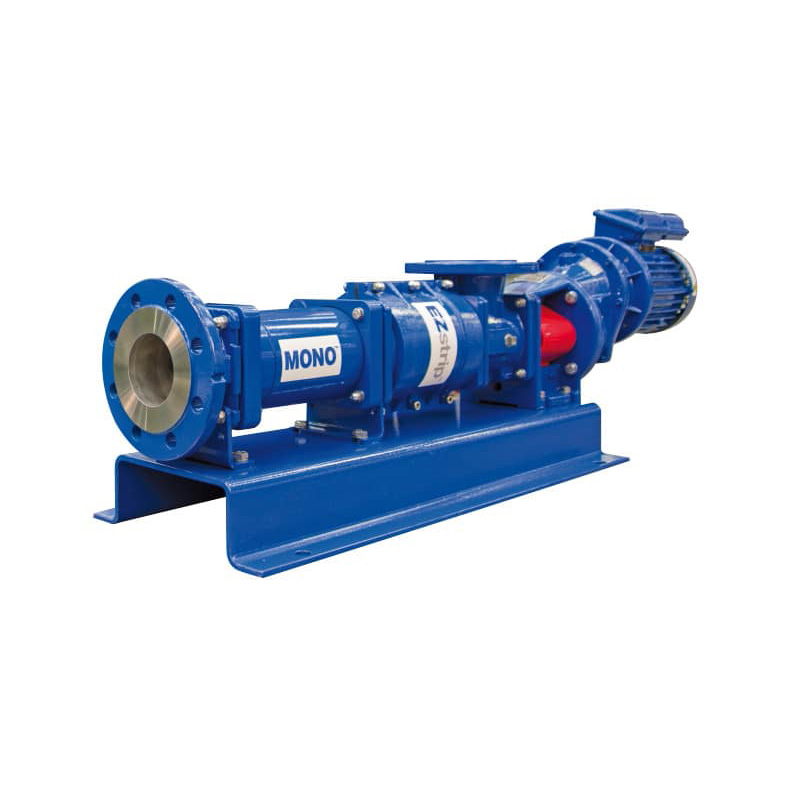
Screw pumps, specifically progressive cavity pumps, stand as exceptional examples of precision engineering in the world of fluid handling. Often unsung heroes, these pumps excel in a wide range of industries by providing consistent and reliable fluid transfer, even with challenging substances. This article delves into the mechanics, diverse applications, and advantages of screw pumps.
How Progressive Cavity Pumps Operate:
Progressive cavity pumps operate on a positive displacement principle, employing a helical rotor and stator assembly. The rotor, often referred to as the screw, rotates within a flexible stator, creating cavities that progress from the pump’s inlet to its outlet. As the rotor turns, these cavities gently and consistently move fluid from one end of the pump to the other. This gentle, non-pulsating action makes progressive cavity pumps ideal for handling shear-sensitive and viscous fluids.
Diverse Applications:
Progressive cavity pumps find applications across a spectrum of industries, including wastewater treatment, oil and gas, food processing, and chemical manufacturing. They excel in moving high-viscosity and abrasive fluids, making them invaluable in processes such as slurry transfer, dosing of additives, and even chocolate production.
Advantages of Progressive Cavity Pumps:
- Precise Flow Control: Progressive cavity pumps provide excellent flow control and accuracy, making them ideal for metering and dosing applications.
- Gentle Fluid Handling: They maintain the integrity of shear-sensitive substances, preventing degradation.
- Versatility: These pumps can handle a wide range of viscosities, from thin liquids to highly viscous materials.
- Low Maintenance: Progressive cavity pumps have few moving parts, reducing the need for frequent maintenance.
In conclusion, progressive cavity pumps, with their precision and versatility, are the quiet champions of fluid handling. Their ability to move fluids gently and consistently, even under challenging conditions, makes them indispensable in industries where precision, reliability, and efficiency are paramount. Whether it’s in wastewater treatment plants, the oil fields, or the production lines of your favorite foods, progressive cavity pumps ensure that processes flow smoothly and materials are handled with care.